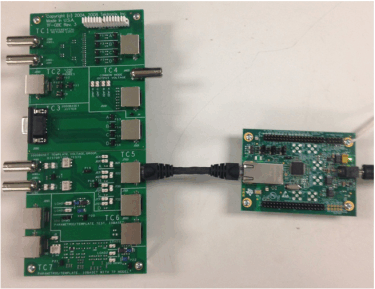SNLA239C May 2021 – December 2023 DP83867CR , DP83867CS , DP83867E , DP83867IR , DP83867IS , DP83869HM
- 1
- Abstract
- Trademarks
- 1Standards and System Requirements
- 2Ethernet Physical Layer Compliance Testing
- 3Debug Test Methods
- 4References
- 5Revision History
- A Outline of Ethernet Compliance Tests for DP8386x
- B Ethernet Compliance Testing MDIO Register Writes for DP8386x
2.1 Standard Test Setup and Procedures
For Ethernet physical layer compliance testing, the PHY is managed through the serial management interface (SMI – also know as MDIO interface) to configure the required test mode scripts. The testing results are determined and recorded by the oscilloscope’s Ethernet compliance software (for example, Tektronix’s TDSET3). It is best to consult with the user's manual of the instrument for proper operation of the software.
The variation between Ethernet physical layer compliance tests is primarily the test mode (see Appendix A) of the PHY and the connection to the test fixture .
The softwares can usually test for many speed options, but it is important to test for the desired end use-case application. When testing 1Gbps, all four channels will need to be tested, while in 10/100 Mbps, one or two channels (depending on MDI/MDIX) will need to be tested.
It is important to account for sample sizes and run-to-run variation when conducting testing.
 Figure 2-1 DP83867 Connected to Testing Fixture through CAT5e Cable
Figure 2-1 DP83867 Connected to Testing Fixture through CAT5e Cable